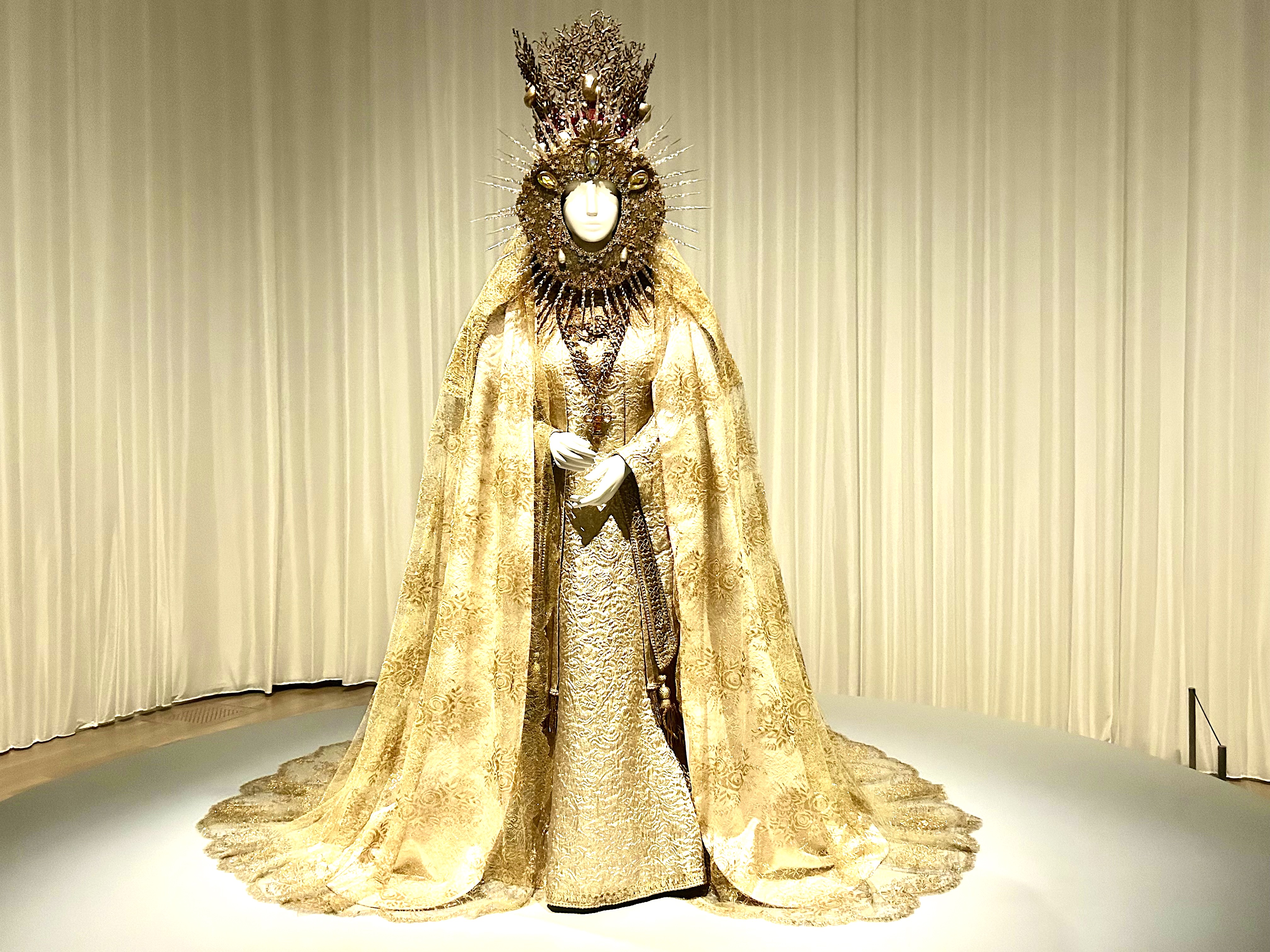YVES SAINT LAURENT, ACROSS THE STYLE
HAPPENINGText: Alma Reyes
One can journey through Saint Laurent’s galaxy of Imaginary Travels, which exposes a multitude of wardrobes in the images of Morocco, Africa, Russia, Spain, and Asia. Except for Morocco where he and Bergé bought a house and often visited, the designer was, in fact, not a great travel enthusiast, and instead, used his sharp imagination to capture fantasy perspectives of other countries.

Imaginary Travels Spain gallery view, Photo: Alma Reyes
He stated, “All I need… is a picture book for my mind to become absorbed in a place, or a landscape… I don’t feel any need to go there. I’ve dreamt about it so much…” (Yves Saint Laurent, Across the Style exhibition, The National Art Center, Tokyo, 2023) His vision, was unfailing, nevertheless, and helped him broaden his creative ideas — quilted jackets with braiding, fur boots, taffeta pants, turbans, and silk damasks.

Imaginary Travels Japan gallery view, Photo: Alma Reyes
For Japan, he made evening gowns and quilted silk kimonos with simple and straight shapes highlighting patterns of cherry blossoms, wisteria, and reeds. Saint Laurent and Bergé visited Japan for the first time in 1963 to present the Spring-Summer collection. Saint Laurent’s deep fondness for the country blossomed with each successive trip, and embedded inspirational symbols into his creations. As he claimed, “I sought out Japan early on and was immediately fascinated by this ancient and modern country, and ever since I have been influenced by it on many occasions.”

Garment for the statue of the Virgin of El Rocío 1985, Dame de Compassion in Paris, Photo: Alma Reyes
More sophisticated garments depict the history of fashion from the Middle Ages to the 1940s in multifarious colors, cuts and fabric materials. Some wedding gowns are also exhibited, which are a vital part in haute couture fashion shows. The astounding Garment for the statue of the Virgin of El Rocío (1985), ornamented in 16th century-themed full gown and cloak in silk brocade, satin, lace, and metal with crystals in its crown and accessories, was created for the statue of the Virgin of El Rocío in the chapel of Notre-Dame de Compassion in Paris. The eye-popping Babouchka wedding gown (1965) in knit wool and silk satin ribbons wraps the bride’s body tightly like a sculpture with only the face, hands and feet being visible.
Read more ...





